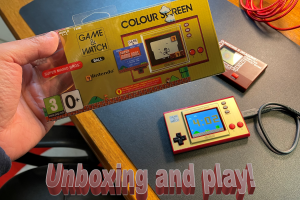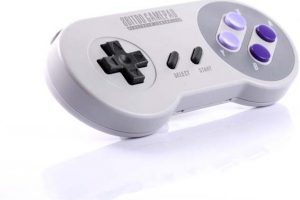I wanted to offer some thoughts on what we learned from the big three console makers at E3. I’ll take each company in the same order I listed them in the blog post title.
Sony
Sony didn’t make many dramatic announcements, but did have a few fan friendly wins in there, particularly for the PlayStation 4 (PS4). The first was that the The Last Guardian will finally be released, albeit in 2016. That should pair up nicely with the 2016 release of UNCHARTED 4: A Thief’s End. The second was an announcement that didn’t receive much press, but was a feature many hardcore PS4 fans have been asking for since day one, and that’s a Media Player feature that actually plays a variety of formats from either a home server or USB stick. The best part is is that that’s already available. The third was the long hoped for Shenmue III, albeit as a bizarre, but already incredibly successful, Kickstarter. Although I own the Dreamcast originals and the Xbox re-releases, I’m not exactly a massive fan of the games, but there’s no denying this was a smart move to cement the PS4’s role as the hardcore gamer console of choice. And speaking of hardcore gamer, thanks in no small part to Sony’s generous lead over the Xbox One, the next Call of Duty game will have a DLC exclusivity window on the PS4 first, something that’s never happened in their competition with Microsoft.

Horizon Zero Dawn looks fantastic, but it’s another PS4 game we won’t see until 2016.
There were several other games discussed, of course, and a little more talk of the VR headset, but the latter won’t be released until next year. 2015 should remain a strong year for Sony and the PS4, but it’s clear that they’re looking to 2016 for their biggest impact.
Naturally, the Vita and PlayStation TV, the latter of which is now being sold regularly at what seems to be right around its cost to produce, weren’t given much mention. Both are clearly now just extensions to the PS4, suitable primarily for remote play. I really like the Vita as it’s an extremely well-built and spec’d handheld (and even wrote a book on it) with a surprisingly good selection of games, but, outside of Japan, there’s not a great deal of interest in gaming-centric handhelds (outside of Nintendo’s, which I’ll get to later). That niche is best served I think by Android-based handhelds (example), which can do pretty much anything a gaming-centric handheld can, as well as of course do a better job at media and apps.
Microsoft
Microsoft had one of their better showings. Besides the expected Halo 5: Guardians and reveals of things like Fallout 4 allowing for PC mods, as well as the usual news on a plethora of other coming games both known (Rise of the Tomb Raider) and unknown (the Tom Clancy stuff), there were a few genuine surprises. The first surprise was of course Xbox 360 backwards compatibility through a rather robust software emulation engine. This is particularly unusual because this is not typically something you unveil well into a console’s second year, but got a lot of people excited because, despite the new generation of consoles from both Microsoft and Sony selling extremely well, there are still lots of last gen hold-outs. This is a big step to making it OK for many of those tens of millions of hold-outs to finally consider switching, i.e., the tipping point. What’s especially nice and a big shot in the arm for often criticized digital content ownership is that all of the games you already own digitally on the Xbox 360 will automatically appear in your “ready to install” list on the Xbox One once the feature is activated (you can use the discs as well). One catch, however, is that only 100 titles will be ready to go at launch later this year, although there is the promise of monthly additions. Another catch is that it’s up to each publisher to allow their Xbox 360 game to run on the Xbox One, so it’s obvious there will be some titles we simply won’t see for purely business reasons, i.e., they want you to buy an updated game on the Xbox One. As an aside, in one of the aforementioned Tom Clancy games, Tom Clancy’s Rainbow Six Siege, this backwards compatibility option will allow them to include free copies of the Xbox 360 versions of Rainbow Six: Vegas and Rainbow Six: Vegas 2 with the new game. That’s of course a great value and a path hopefully other publishers will also go down.

The Xbox Elite wireless controller is a beauty with a beast of a price.
The next surprise was the unveiling of the Xbox Elite wireless controller, which has fully customizable and swappable controls. It’s a true hardcore gamer controller with the only disappointment being a price to match at $150. I honestly would have expected Microsoft to go for economies of scale here and release the controller at $100, but either way, it’s yet another positive indication that Microsoft is trying to win back some of the gamer’s lost to Sony’s somewhat unexpected momentum with the PS4 (unexpected from the standpoint of it not having the greatest launch or post-launch game line-up and still selling like gangbusters).
It was also good to hear more about Hololens (a concept pictured in the featured image at the top of this blog post) and the partnership with Oculus, with Microsost covering both their augmented reality and virtual reality bases. I strongly believe the technology is finally there for this type of technology and we’ll finally have that next revolution in gaming we really haven’t had since the mid-90s transition from pixels to polygons. I think it’s a smart gamble for Microsoft to try and lead in this area (even though Sony has an offering of their own), particularly when combined with the Windows 10 features that will both become present in the Xbox One and will work in conjunction with Windows 10-based machines. Already one of the most rapidly evolving of the three consoles, i.e., with the most consistent monthly software updates and feature roll-outs, late 2015 and beyond look to be especially exciting for an Xbox One that definitely suffered early image issues.
Nintendo
While many were surprised at Nintendo’s lackluster E3 presentation, I really wasn’t expecting much. Prediction time again, but it seems clear to me that major resources are being redirected to Nintendo’s next generation handheld/console, the NX. To me this means that we’ll see a major NX presentation at E3 2016, with a worldwide launch in the holiday 2016 window. The Wii U has never sold to expectations (in fact, because of the Vita’s failure and all the work that went into that book, I ended up having to cancel a similar Wii U book with the same publisher because the same writing was on the proverbial wall; an Xbox One book in the series did make it out, however) and there’s really nothing Nintendo can do about it except start over. As I previously predicted prior to its launch in 2011, while the 3DS has sold well, it’s selling nowhere near what its predecessor, the DS sold (different times, different expectations, etc.). These days, the only stronghold for “pure” gaming handhelds is Japan. They sell decently elsewhere, including here in the US, but just don’t have the mindshare they used to for the very reasons I described when talking earlier about the Vita [Side note: It used to be that for every GameBoy generation through the DS, you’d see kids walking around playing them. In the 3DS era (today), you’re more likely to see these kids on a smartphone (theirs or their parent’s) or tablet than a 3DS. It’s not hard to understand why and why this trend will only continue.]

Super Mario Maker is definitely something to look forward to still on the Wii U.
With the Wii U a lost cause and the 3DS in its twilight years, a single 2016 successor to both makes the most sense and is the most reasonable explanation for why Nintendo had very little to show/wow at E3, including a surprisingly rough looking Star Fox game and a not-the-type-of-Metroid Metroid fans were expecting.
As usual, I’d love to hear your thoughts on anything related to this subject, so sound off in the comments. I’ll also be happy to share more of my thoughts that didn’t make it into this particular blog post, so feel free to ask away.






 Your total news and information resource for all things Science, Technology, Engineering / Mathematics, Art, and Medicine / Health.
Your total news and information resource for all things Science, Technology, Engineering / Mathematics, Art, and Medicine / Health.
1 Comment
Leave your reply.